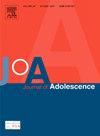The current investigation's central goal was to elucidate the complex features of peer teasing episodes that individuals use to interpret teasing as harmful versus playful.
In 2022–2023, we used semistructured interviews to gather retrospective reports of K-12 peer teasing experiences from a sample of 27 students from a university in southern Ontario, Canada (18–25 years old, 63% female, 78% White).
Content analysis revealed the multifaceted nature of teasing, with participants defining teasing as harmful, playful, or including elements of both harm and pleasure. Harmful teasing experiences often included content that was sensitive to the target, occurred between both friends and nonfriends, and often included a power differential with the teasing perpetrator having more power than the target. Targets recalled negative emotional responses, with behavioral responses to mitigate the situation and reduce further teasing. In contrast, playful teasing often occurred between friends or close friends, was often motivated by positive interpersonal motives (e.g., for encouragement), and had positive impacts on the relationship between perpetrator and target. However, despite benign intent, some playful teasing was marked by negative emotional responses and feelings of harm.
Results have implications for uncovering the nuanced and complex nature of teasing, and provide a preliminary profile of harmful versus playful teasing interactions.


